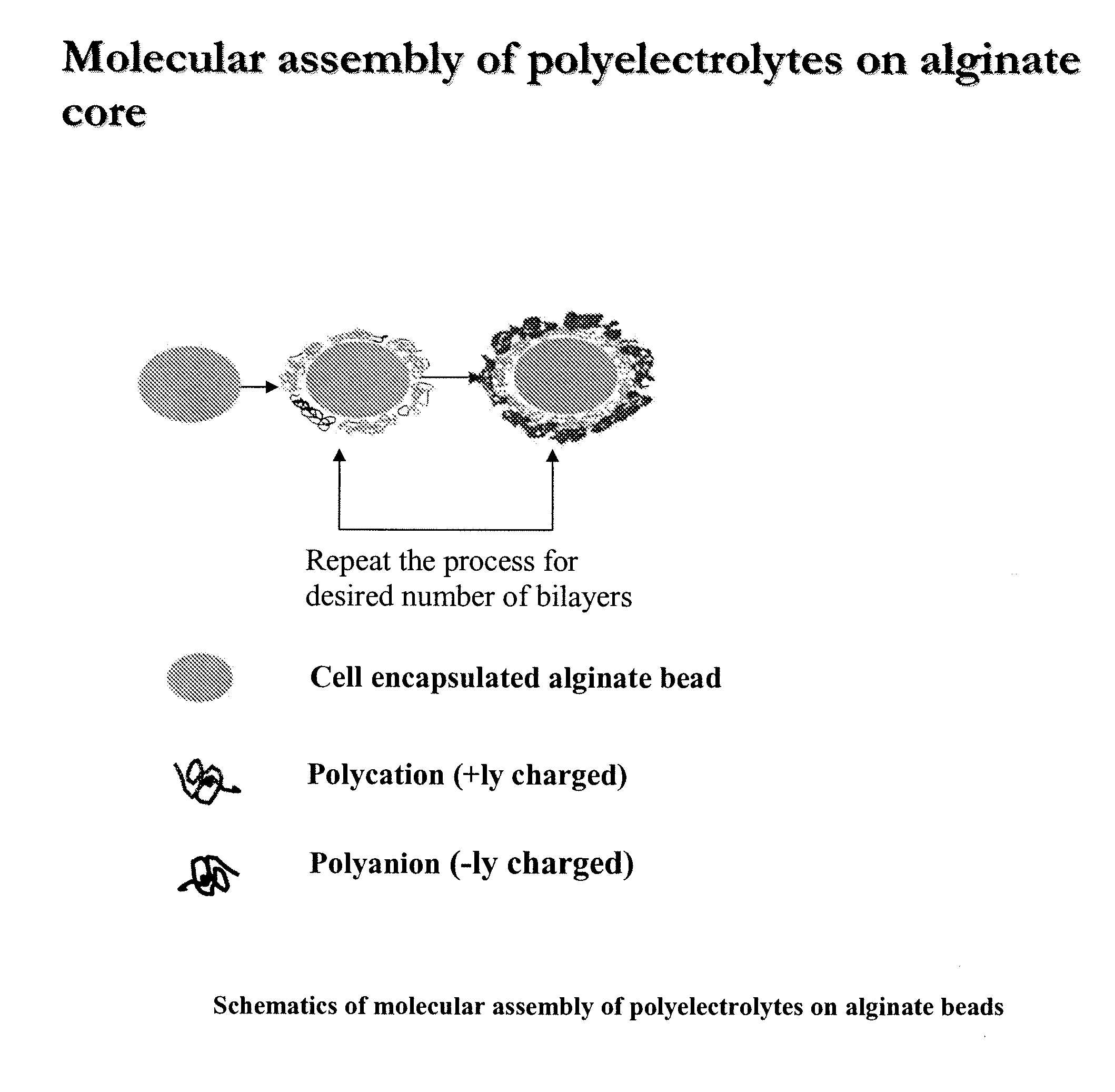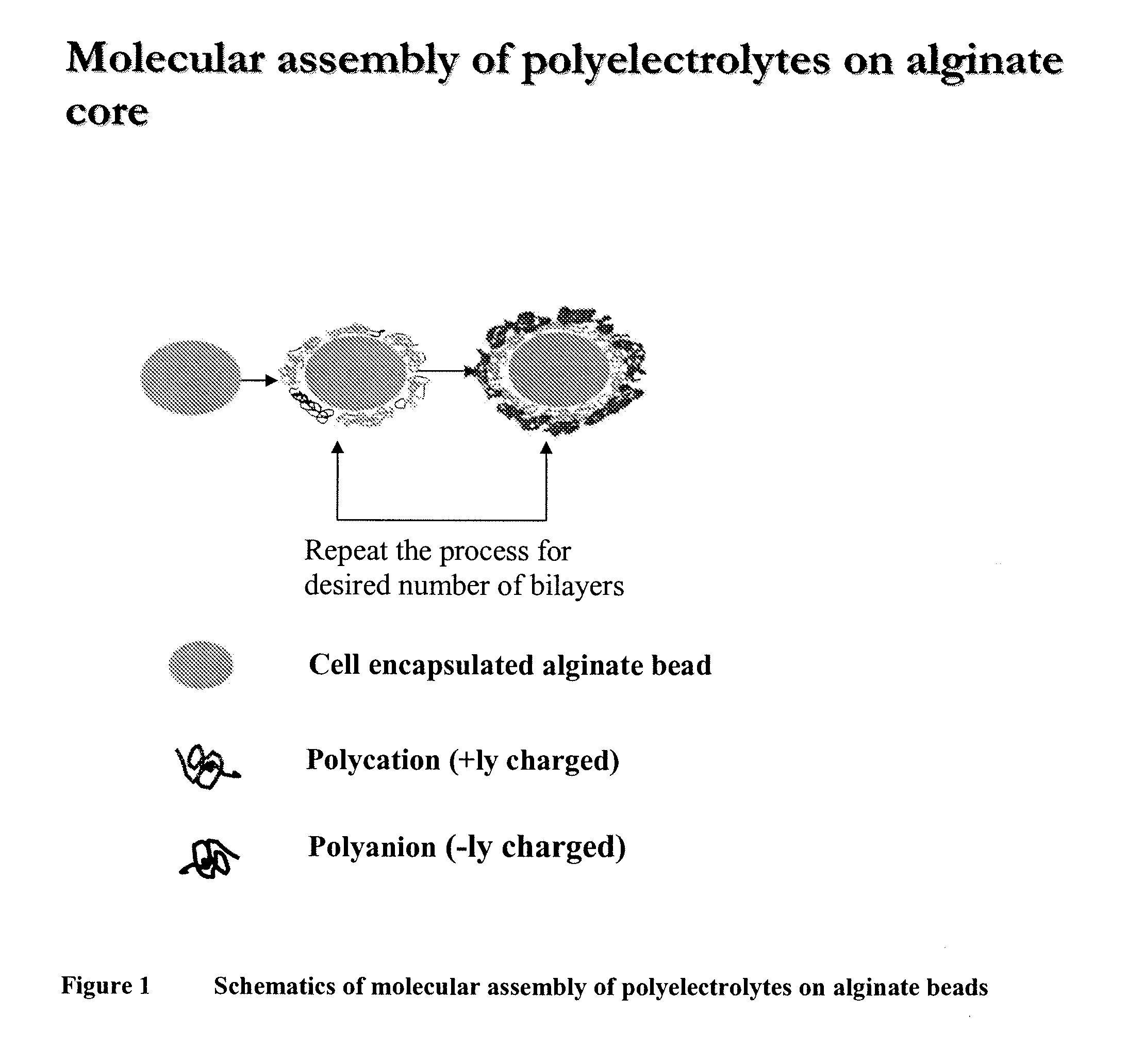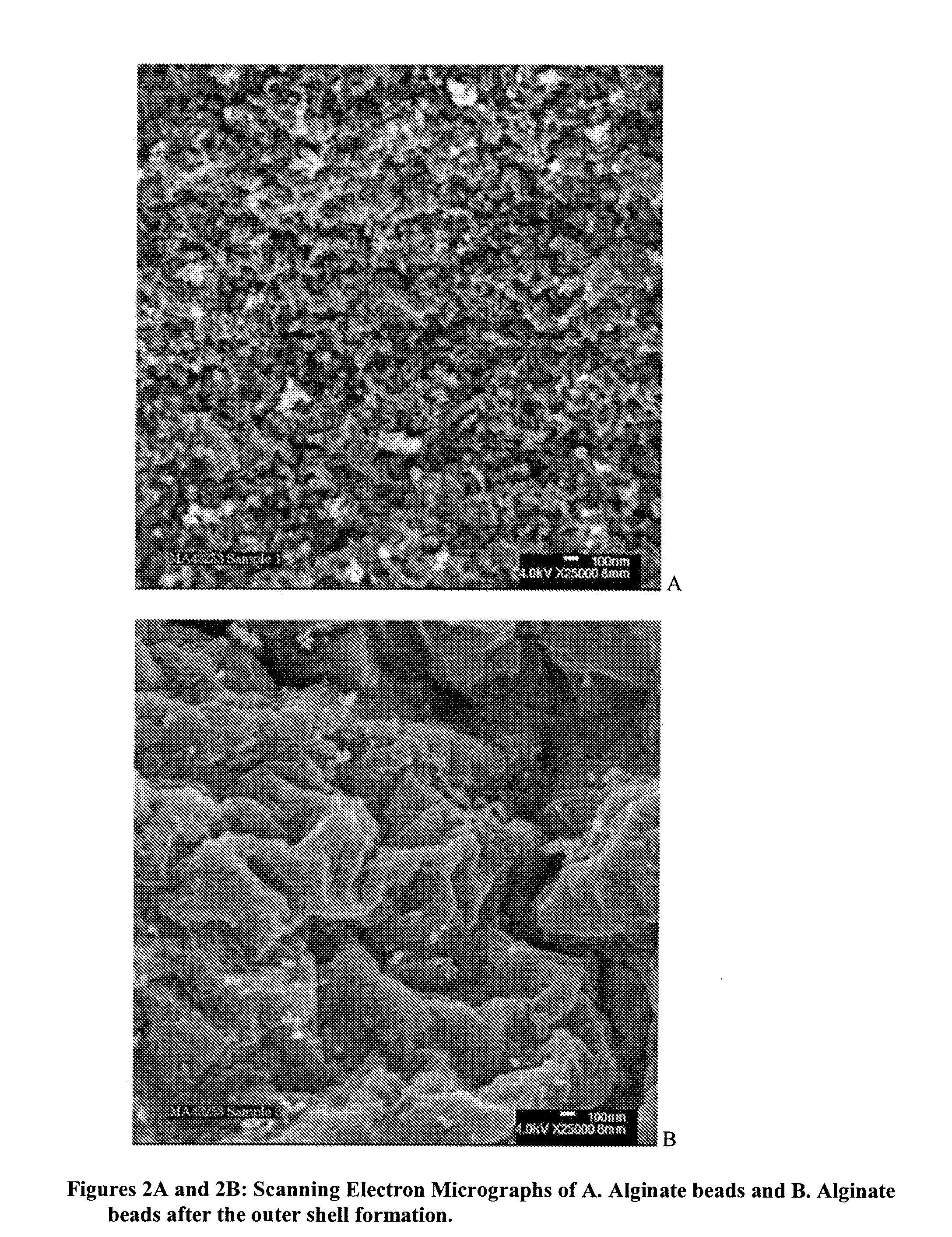Multilayered polyelectrolyte-based capsules for cell encapsulation and delivery of therapeutic compositions
a polyelectrolyte-based capsule and cell technology, applied in the direction of microcapsules, coatings, colloidal chemistry, etc., can solve the problems of multiple drawbacks, limited method for expressing hormones or proteins, and exhibiting detrimental side effects
- Summary
- Abstract
- Description
- Claims
- Application Information
AI Technical Summary
Benefits of technology
Problems solved by technology
Method used
Image
Examples
example i
[0184]General Synthesis of Modified Alginates
[0185]Polymer grafted alginate was prepared by a radical solution polymerization of acrylated monomers in the presence of alginate and an aqueous free radical initiator. Sodium alginate and at least one type of acrylated monomer were dissolved in HEPES buffered saline to yield a solution of 3% (w / w) alginate and a final monomer concentration of 0.04 to 5.0 mmol. Aqueous initiator was added to the alginate / monomer solution in an amount of 0.5 wt % of total monomer. The entire mixture was vortexed and allowed to react for 4 hr with additional vortexing at 15 min intervals.
example 2
[0186]Capsule Fabrication
[0187]Islets were suspended in 2.0% of alginate or modified alginate and placed in a droplet generator adapted from that of Walters et al., J. Appl. Biomater. 3:281 (1992). Droplets generated from islets suspended in the alginate or modified alginate solution were collected in a funnel containing 1.1% CaCl2, where they gelled.
example 3
[0188]Polyelectrolyte Deposition by sequential layering—LbL process.
[0189]Alginate beads, bearing net negative surface charge density are incubated with a polycation solution in a medium containing 1.8 mM CaC12 for 5 minutes at room temperature, with rocking. After 5 min, the beads are allowed to settle and the supernatant is removed using a pipette. The beads are rinsed three times with serum free culture medium. They are subsequently incubated with a solution of the polyanion for min. with rocking. The supernatant is removed and the beads are rinsed three times with serum free culture medium. The process of incubation in polycation, washing ; incubation in polyanion and washing result in the formation of a single bilayer. This process is repeated to increase the number of bilayers as desired for a particular application. The washed beads are further cultured at 25 C in a serum free culture medium.
PUM
| Property | Measurement | Unit |
|---|---|---|
| pore size | aaaaa | aaaaa |
| concentration | aaaaa | aaaaa |
| concentrations | aaaaa | aaaaa |
Abstract
Description
Claims
Application Information
 Login to View More
Login to View More - R&D
- Intellectual Property
- Life Sciences
- Materials
- Tech Scout
- Unparalleled Data Quality
- Higher Quality Content
- 60% Fewer Hallucinations
Browse by: Latest US Patents, China's latest patents, Technical Efficacy Thesaurus, Application Domain, Technology Topic, Popular Technical Reports.
© 2025 PatSnap. All rights reserved.Legal|Privacy policy|Modern Slavery Act Transparency Statement|Sitemap|About US| Contact US: help@patsnap.com



